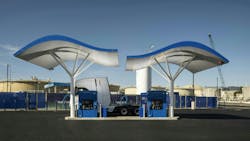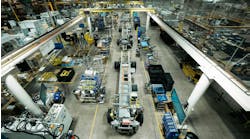FleetOwner covered a lot of Emissions & Efficiency news this year, from the EPA and CARB to weekly diesel and gas prices, ways to reduce emissions, and pioneers of fleet electrification.
FleetOwner readers picked our top 10 Emissions & Efficiency articles this year through page views, and it appears our readers’ interests are just as varied as the topics we covered. Three of the top 10 articles centered around the challenges of fleet electrification, yet of the five top articles that were specific to OEMs, four of them were centered around electric vehicles Finally, the most-read Emissions & Efficiency article had nothing to do with diesel, gas, or electric vehicles.
10. Where regulators' push for heavy-duty EVs falls short
The latest federal greenhouse gas emissions standards for heavy-duty vehicles put significant pressure on manufacturers to sell electric vehicles. The technology still falls short of long-haul trucking needs.
EPA’s Greenhouse Gas Emissions Standards for Heavy-Duty Vehicles-Phase 3 stops short of an electric truck sales mandate, but the rule’s authors assume “most if not all” manufacturers will use EVs in their compliance strategies. Read more…
9. Bollinger Motors moves from EV startup to production
Established in 2015 by Robert Bollinger, the company’s founder believes this production milestone will propel Bollinger into the category of “a true OEM,” he told FleetOwner back in March at NTEA’s Work Truck Week.
“Once we have a true production vehicle out for sale, we’re an OEM,” he said.
If Bollinger’s B4 vehicle production and deliveries take place as scheduled, it will mark one decade since the EV startup began its journey to become a “true OEM.” For nearly 10 years, Bollinger and his team have researched, developed, designed, redesigned, changed customer targets, and relocated headquarters hundreds of miles away, all while seeking capital, supplier partners, and production capacity. Read more…
8. Volvo teases upcoming VNL Electric truck during diesel VNL event
DUBLIN, Virginia—With its safety features, fuel-efficient design, and connectivity capability, the new Volvo VNL could become the safest, most fuel-efficient Class 8 truck on the market. The VNL platform was designed to be used in Volvo’s future trucks powered by alternative power systems, and Volvo has already announced the next power system to be used in the all-new VNL.
Volvo offered a quick, distant look at the VNL Electric prototype at the close of a media event featuring a deep dive into the all-new VNL. A curtain hiding the vehicle lifted just long enough for media to take photos before lowering again, and Volvo executives took no questions. Read more…
7. Is the EV infrastructure worry bigger than it should be?
The path to zero-emission fleet technologies looks different for every operation, especially in 2024 when fleets can choose from multiple options. Where one fleet might choose to be 100% electric, another might choose a “mixed bag” of propulsion systems and motors, Trent Broberg told FleetOwner.
While some fleets are still creating zero-emission strategies, the companies that build the vehicles have been focused on their futures for years. Whether these strategies align depends on who’s asked, but one thing both fleets and OEMs can agree on is that for EVs and alt-powered vehicles to succeed, they’ll need fueling infrastructure to support them. Yet, is having more public charging infrastructure a want or a need? Read more…
6. Peterbilt, Kenworth add Paccar’s low-NOx MX-13 engine to six models
The CARB-compliant, low-nitrogen oxide version of the Paccar MX-13 engine is now available for three heavy-duty Peterbilt and three heavy-duty Kenworth models. The engine meets California Air Resource Board omnibus regulations and features redesigns of internal hardware and the aftertreatment system to reduce NOx emissions effectively.
Peterbilt announced the new MX-13 is available for order in its Models 579, 567, and 589 trucks. Kenworth announced that the new CARB-compliant engine is now available to order on its T680, T880, and W990 trucks. Read more…
5. Analysis: Trucking's electrification problem
There’s a prevailing theory out there that electric trucks are going to save the world and their adoption must be accelerated. Instead of pumping oil from the earth and converting it into energy—and as a result creating the harmful emissions that the United Nations warns will create climate catastrophes ranging from hurricanes to droughts—these battery-powered trucks can run on renewable resources like solar and wind power, all while creating zero emissions.
And because EVs have fewer moving parts, they are expected to require less maintenance. That’s important as maintenance operations struggle to find technicians to work on vehicles in general. Tack on the benefits to drivers—quieter, cleaner operation that doesn’t cause fatigue-inducing vibrations—and there’s a lot to be excited about.
The problem is that there’s an equal or greater amount of concerns. Read more…
4. The history of fueling infrastructure
Lagging nationwide charging infrastructure development has been an argument against the widespread adoption of zero- and low-emission vehicles. Electric vehicle owners might experience range anxiety when they don’t know where they can recharge next. A fleet owner who exclusively uses propane autogas might not have any public filling stations in their area. While range anxiety might feel new and alt-fuel filling stations appear few and far between, society has been here before.
In 1905, the Federal Highway Administration reported there were 77,400 registered automobiles on the roads. But the first traditional drive-in gas station wasn’t established until eight years later in 1913 in Pittsburgh, Pennsylvania, selling “Good Gulf Gasoline,” a Safe Rack article notes. There were several years between the first vehicles sold and the widespread establishment of the gas station. Read more…
3. Rivian extends its reach into the commercial vehicle space, enters partnership with JBPCO
INDIANAPOLIS—Rivian is making its way further into the commercial vehicle space, stripping the van body from its Rivian CV product and marrying its chassis to the Morgan Olson C250. The partnership will lead to the development of an electric version of the C250 step-van announced in March 2023, designed specifically for Canada Post. The companies made the announcement at NTEA’s Work Truck Week here in Indianapolis.
While the C250e is the partnership's current focus, Joe Thompson, Morgan Olson's COO, told FleetOwner the Rivian platform could be used with other bodies "down the road.” This is because leaders in the JBPCO group see Rivian as the electrified answer to a need in the light-duty commercial vehicle space. Read more…
2. Nikola CEO: 'We're all in, and there's no turning back.'
Nikola Corporation’s pivot away from battery electric trucks and full focus on hydrogen fuel cell EVs continues to pay off.
Nikola produced 77 trucks and shipped 73 during the second quarter, a 58% and 38% jump, respectively, year over year. Last quarter, executives aimed to ship 50 to 60 trucks in Q2, marking this as the second consecutive quarter they have beaten expectations. Read more…
1. A new kind of fueling system helps scale H2 infrastructure
Clean hydrogen has the potential to cut trucking’s carbon output. However, filling large H2 tanks for fuel cells and internal combustion engine trucks is complicated. FirstElement Fuel, which will open the nation’s first public hydrogen truck stop this month, has solved this fueling challenge with a cryopump.
“As we started rolling out a network of [light-duty] stations, we quickly learned that technology that was available out there was not commercially viable,” said Dr. Shane Stephens, FirstElement founder and chief development officer. “It couldn't scale, it couldn't meet the needs of the public, and it didn't have the reliability for the business model necessary to make it viable.” Read more…
Along with these articles, FleetOwner publishes several popular annual features that garner attention throughout the trucking and transportation industries. These include our annual looks at the largest commercial transportation systems in the U.S., the FleetOwner 500: For-Hire and FleetOwner 500: Private Fleets.
Our annual profiles of women in the industry, Women in Transportation 2024, were published this summer. Each year, FleetOwner recognizes the transportation operations of private fleets with the FleetOwner Private Fleet of the Year award. This fall, we expanded and rebranded our annual New Models to the 2025 FleetOwner vehicle guide, our largest-ever look at the next generation of heavy-duty, medium-duty, light-duty, and alternative-powered trucks and vans.
We put a bow on the year with the 2024 Trucking by the Numbers feature, an info-graphical look at the facts and figures that make up the trucking and transportation industries. To view what's ahead for FleetOwner in the new year, please check out our 2025 Media Kit.

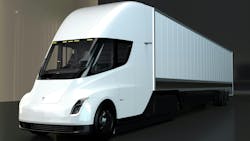
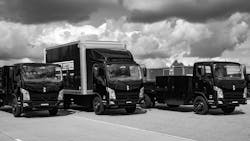
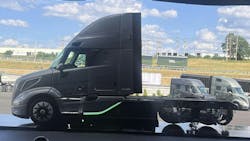
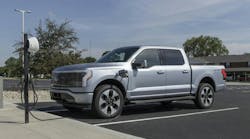
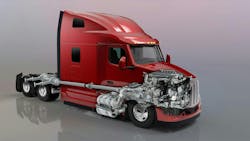
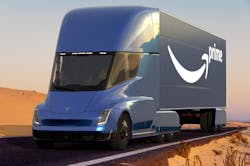
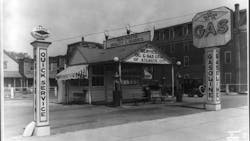
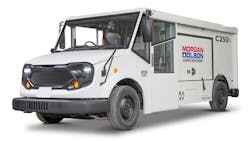
![Already, Girsky said, Nikola has been “getting more calls” not just from those looking to deploy the vehicles but also from “strategic partners like automotive OEMs, suppliers, hydrogen producers, and Big Energy who recognize [Nikola’s] key role as a first mover in the hydrogen economy.” Already, Girsky said, Nikola has been “getting more calls” not just from those looking to deploy the vehicles but also from “strategic partners like automotive OEMs, suppliers, hydrogen producers, and Big Energy who recognize [Nikola’s] key role as a first mover in the hydrogen economy.”](https://img.fleetowner.com/files/base/ebm/fleetowner/image/2024/12/676582bf3e9397494b1fb69e-nikola_corporation.png?auto=format,compress&fit=max&q=45&w=250&width=250)
